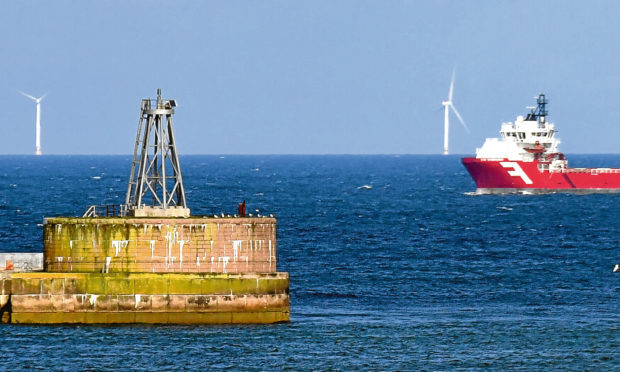The owner of the world’s first floating wind farm off Peterhead is eyeing further opportunities in the North Sea.
Stephen Bull, Statoil’s senior vice president of wind and low carbon solutions, said the east coast of Scotland was a “natural area where we’d like to grow our business if we can” as it looked to build on the success of the pioneering Hywind development, which was powered up for the first time in October.
The innovative array features turbines held upright in the water by ballast in the base rather than a traditional steel subsea frame bolted to the seabed.
In its first operating quarter, Hywind proved more efficient in power production than traditional turbine designs.
“The whole commissioning has been good and it means we’ve had a capacity factor of about 65% for the last three months,” Mr Bull said.
“We’ve exceeded our budget expectations on the project so far, which is great.”
Statoil is now looking at further opportunities to deploy Hywind technology, including in the North Sea.
The Kincardine Offshore Wind project, also off Peterhead, has permissions to support the technology.
“Deployments, deployments, deployments’ is always our mantra in renewables,” Mr Bull said.
“We know it worked for solar and onshore wind and it’s exactly the same for offshore wind.
“We think we can get good volume, particularly with Scotland, but also potentially with France and Japan as well. This will inevitably become a global business opportunity.”
Mr Bull said the next stages of development for floating wind was proving the concept long term in differing conditions and driving down costs to a comparable level with fixed base turbines.
